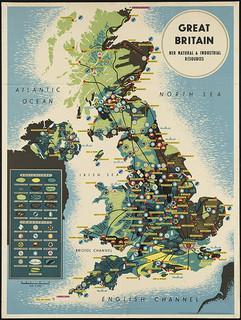
Great Britain. Her natural and industrial resources (Photo credit: Boston Public Library)

Supply and Demand (Photo credit: Wikipedia)
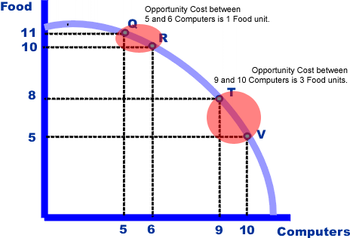
English: A production possibility frontier showing opportunity costs. (Photo credit: Wikipedia)
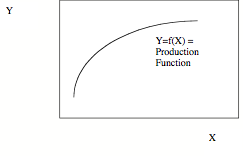
English: Production Function (Photo credit: Wikipedia)

OBEY! Shepard Fairey: Supply and Demand (Photo credit: BoringPittsburgh)
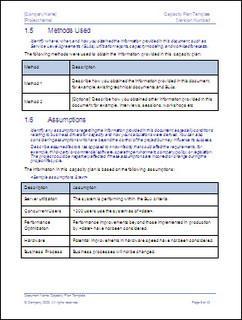
Capacity Planning – MS Word template (Photo credit: IvanWalsh.com)
An international company’s production and operations strategy involves manufacturing a product or providing a service. It must acquire many resources before international production and operations activities can begin.
The company must make decisions regarding: where it will get raw materials or components, how much production capacity it needs, whether to construct or buy new facilities, the size of service centers, and where it will get financing. These decisions are complex and interrelated.
Production strategies also involve decisions regarding whether to centralize or decentralize production; and standardize or adapt production to national markets.

An example of a market demand schedule (Photo credit: Wikipedia)
Careful planning of production helps companies cut costs to become low-cost leaders. Low-cost strategies require large-scale production because producers want the cost savings of economies of scale.
Production and operations strategies, allow firms to integrate and design new products or product features to pursue a differentiation strategy. R&D costs are higher for products with special product designs, styles, and features. Differentiation strategies involve the perception of extra value by offering something unique, such as superior quality, added features, or special brand images. Companies with differentiated products find decentralized production the better option; locating separate facilities near different markets allows companies to respond to buyer needs and preferences. When R&D and manufacturing must cooperate for differentiation, they are usually located in the same place.
Capacity planning is the process of determining the production capacity needed by an organization to balance supply and demand variables. A discrepancy between the capacity of an organization and the demands of its customers results in inefficiency, either in under-utilized resources or unfulfilled customers. The goal of capacity planning is to minimize this discrepancy.
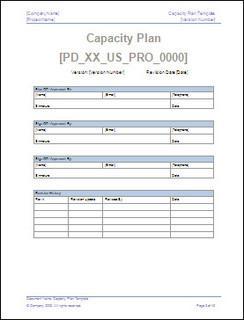
Sample Capacity Plan Template (Photo credit: IvanWalsh.com)
Effective design capacity is the maximum amount of work that an organization is capable of completing in a given period of time in light of constraints such as quality problems, delays and material handling.
Demand for an organization’s capacity varies based upon: changes in production output, increasing or decreasing the production quantity of an existing product, or producing new products. Capacity can be increased in a number of ways: introducing new techniques, modifying the equipment and materials, increasing the number of workers or machines, increasing the number of shifts, or acquiring additional production facilities.
“Capacity is calculated as (number of machines or workers) × (number of shifts) × (utilization) × (efficiency).”
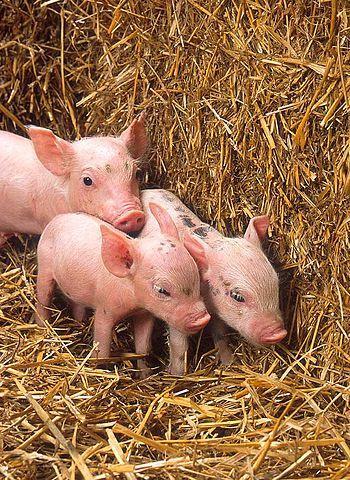
More piglets from http://www.ars.usda.gov/is/graphics/photos/ Image Number K9455-1 Piglets are one of the main subjects of ARS animal behaviorists. These scientists study behavior of pigs and cows ’round the clock with the goal of improving animal handling practices to reduce stress on animals and lower production costs. Photo by Scott Bauer. (Photo credit: Wikipedia)
Capacity utilization involves assessing a company’s ability to produce enough output to satisfy market demand. If capacity now used is greater than the expected market demand, production must be scaled back.
Countries have different laws regulating the ability of employers to eliminate jobs; depending on the country, a firm may or may not need to give advance notice of layoffs or plant closings.
If market demand is growing, managers may expand production or build additional facilities to expand capacity.
Managers must select a location for production facilities based upon: the cost and availability of labor and management, raw materials, component parts, and energy. Other major variables include: “political stability, the extent of regulation and bureaucracy, economic development, and the local culture, including beliefs about work and important traditions.”
Reducing production costs through lower wages is essential to competitive pricing; especially when labor accounts for a large portion of total production. Lower wages must be balanced against worker productivity issues.
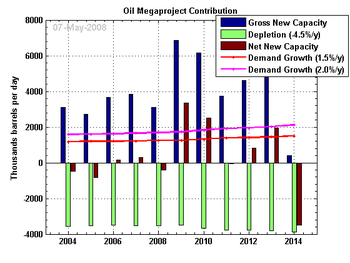
Production capacity from the oil megaproject database (Photo credit: Wikipedia)
Supply issues are important in location planning; the greater the distance between production facilities and target markets, the longer it takes for customers to receive shipments. Managers must compensate for delays by maintaining larger inventories; this increases storage and insurance costs.
Shipping costs are greater when production is conducted far from target markets. Transportation costs are a driving force behind the globalization of many industries that produce heavy products like the steel industry.
Location Economies are economic benefits derived from locating production activities in optimal locations. Optimization is heavily influenced by labor and capital costs. “Centralized production refers to the concentration of production facilities in one location. Decentralized production spreads facilities over several locations and could mean one facility for each business environment.” Transportation costs and the physical landscape affect the centralization versus decentralization decision.
Availability and cost of labor in the local market is crucial to process planning; if labor in the host country is relatively cheap, a company will opt for less capital intensity and more labor-intensive methods in production.
Production processes must be standardized or adapted for different markets. Large production batches reduce the cost of producing each unit, offsetting the higher initial investment in automation; costs are further reduced as employees repeat the process and learn.
Facilities Layout Planning involves decisions regarding the spatial arrangement of production processes within production facilities. Facility layout depends on the type of production process deployed.
International companies must acquire physical resources to begin operations. They must decide whether to make or buy the raw materials and components for their production processes. “Vertical integration is the process by which a company extends its control over additional stages of production—either inputs or outputs. When a company makes a product, it engages in “upstream” activities: Production activities that precede current business operations.” The company decides to make the products rather than buy them in order to reduce total costs. Making the product in-house can give managers greater control over raw materials, product design, and the production process; this can enhance product quality.
“Outsourcing is the practice of buying from another company a good or service that is not central to a company’s competitive advantage. Outsourcing results from continuous specialization and technological advancement.” Outsourcing reduces vertical integration costs. Outsourcing can be used effectively when social unrest or open conflict can threaten physical facilities, equipment, and employee safety because it eliminates the exposure of assets to political risk.
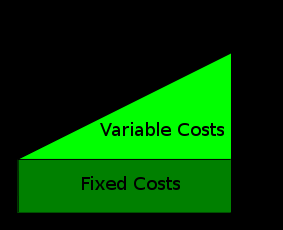
English: Cost-Volume-Profit diagram, decomposing Total Costs as Fixed Costs plus Variable Costs. (Photo credit: Wikipedia)
Companies that buy products from one or more outside suppliers retain or gain flexibility. Added flexibility is key in a change of attitude toward outsourcing.
Buying from several suppliers or establishing production facilities in several countries allows outsourcing from one location if instability erupts in another. Volatility in exchange rates can increase or decrease the cost of importing/outsourcing. Buying from multiple suppliers in several countries permits form flexibility and reduces overall risk.
“Fixed assets are company assets such as production facilities, inventory warehouses, retail outlets, and production and office equipment. Companies can (1) acquire or modify existing factories, or (2) build new facilities; a greenfield investment.”

